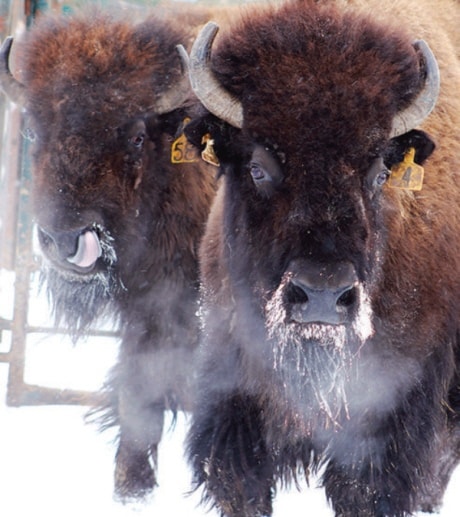Since the Canadian BSE (Mad Cow Disease) scare the bison industry has strengthened, but it still has many hurdles to overcome, and many more accomplishments to achieve.
Canadian Bison Association (CBA) executive director Terry Kremeniuk says trade negotiations are ongoing between Canada and Europe for international economic partnerships.
If a deal is signed and the CBA gets what they want it will positively affect the Canadian bison industry. “The things that we’re looking for in the bison industry is we wanted a zero per cent tariff and no quota.”
Kremeniuk doesn’t believe the industry will receive their wish of no quota, but he says that’s something they can live with.
The bison industry is also working to develop new markets with China and Mexico.
Why would the bison industry want to go to Mexico, Kremeniuk rhetorically asked the crowd at the 2013 Wildrose Bison Convention, Show and Sale.
He said Mexico has 105 million people, 25 per cent of the population is wealthy and eight per cent is “very wealthy.”
“So, if we can push a certain product in that area and contribute to the profitability of the costs that’s what we want to do. We don’t want to be hung out to dry if the US markets close their borders.”
Dealing with the United States presents its own challenges, said Kremeniuk. “There are always trade irritants we have to keep on top of.”
One issue is wildlife services inspections, which Kremeniuk feels required additional costs, effort and appointments.
He says with cutbacks within the United States inspections will no longer take place on weekends and people will have to move their animals only during business hours.
Interprovincial trade agreements present another set of challenges.
“There are a lot of issues that have to be dealt with before that issue is resolved,” said Kremeniuk.
One of the biggest perceived problems is the provinces have to rely on the standards of the interprovincial meat trade.
“It would be great for Alberta if all the other provinces would agree to Alberta standards. Of course the other provinces aren’t prepared to do that so I expect it’ll be a while before there’s a trade agreement with respect to meat processes at provincial plants,” he added.
Other trade challenges don’t relate to actual countries. Six or seven years ago a committee on the status of endangered animals recognized plains bison being classified as threatened.
“And if the bison was classified as threatened that could have implications on trade,” said Kremeniuk.
In 2004 and 2005 CBA was able to work with the federal government and the plains bison was not specified as a threatened endangered species.
In that process only public herds were assessed and Kremeniuk feels private herds shouldn’t be forgotten.
‘They play an important role in terms of ensuring that the genetics of stock bison is large and diversified.”
